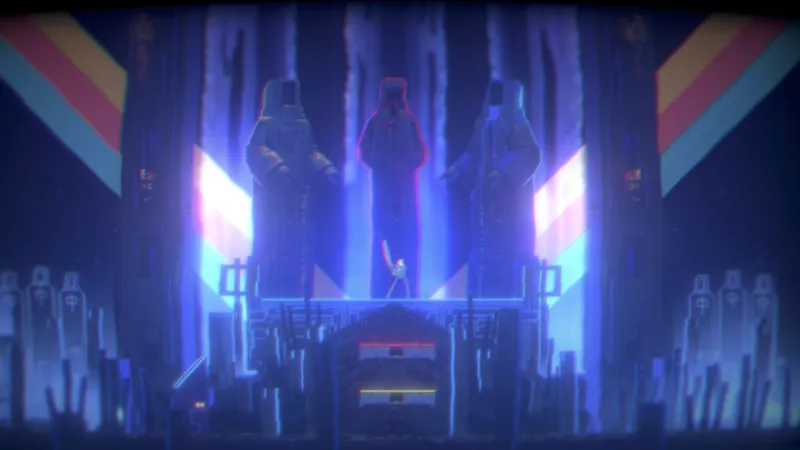

The third switch is just outside the entrance to the Castle of the Techno-Fathers. Interacting with the button will activate the same sequence. After taking the elevator down, keep running to the right until you come to a statue that looks exactly like the one shown above. The second switch is in the underground garden. Pressing the button will switch the camera to a door on the banks of the Achromatopsia River. The button is located on a holo-statue with a floppy disk logo right above it. It’s pretty hard to miss because it’s on the linear progression path of history. The first button is in Calculation Room 3, just after accessing the Creator’s first memory. This is, for all intents and purposes, the first major area of the game. To gain access to the first backup floppy, you will need to press three buttons inside the Castle of Techno-Parents. Backup Diskette 1 – The Techno-Parent’s Castle There are helpful tips to guide you in your search, and we’re here to help you further with this. These discs are hidden throughout the Kingdom. In fact, you will need to track down five backup floppies to get this secret memory. While access to 12 memories is required, there is a secret 13th “backup” memory that involves finding the backup floppy locations in Narita boy. Aptly called the Creator, he traverses fragments of his past that trace his desire to make the Digital Realm. To do so, you must restore the memories of the man who programmed it to exist. Story of Modern Japan Dr.In Narita boy, Studio Koba’s debut title, you are tasked with saving an entire Digital Realm.Japan by Marianna Zanetta travel tips and advice.External articles to assist you on your visit to Japan. Articles about Japan published by Odyssey Traveller.įor all the articles Odyssey Traveller has published for mature aged and senior travellers, click through on this link. If time allows, make sure your trip itinerary of your tour of Nara includes participation in an authentic Japanese tea ceremony, or a sampling of Nara’s fine Harushika Sake, brewed in the city and also sold internationally.

Nara has a variety of accommodations, from five-star hotels to ryokan (traditional inn in Japan). You can buy “deer crackers” from street vendors around the park to feed them. The famous Nara deer park is another star attraction stroll through and greet its hundreds of free-roaming deer. Though the reconstruction of the great hall was at two-thirds its original size, it remains the largest wooden building the world. The hall that contains the statue, the Daibutsu-den (Great Buddha Hall), was rebuilt in 1709. Its main entrance, Suzaku Gate, and the East Palace Garden have been restored, while excavations of the palace grounds continue.Įast of the imperial palace was the Buddhist temple of Todai-ji, founded in 752 AD, and houses Nara’s main tourist attraction, the 15-metre, 500-tonne Daibutsu or Great Buddha, one of the largest bronze Buddha statues in the world. The Heijo Palace was the imperial residence of the Japanese royal family during the Nara period, but fell into disrepair after the capital was moved to Kyoto (Heian-kyo). The urban designs of ancient Nara and Kyoto (which succeeded Nara as capital for more than a thousand years), were based on the Tang dynasty capital of Ch’ang-an (located near modern-day Xian).Ī walking tour of Nara will show that the city is second only to Kyoto in terms of traditional Japanese architecture, especially religious architecture. Japanese artists travelled to or studied in China and brought back ideas, modelling their literature and music after Chinese canon, and applying Chinese models on Japanese legal codes. Nara, then called Heijo-kyo, was capital of ancient Japan from 710 to 784 AD, during which the imperial government enjoyed diplomatic relations with the powerful Tang Dynasty of China, and embraced Buddhism.


 0 kommentar(er)
0 kommentar(er)
